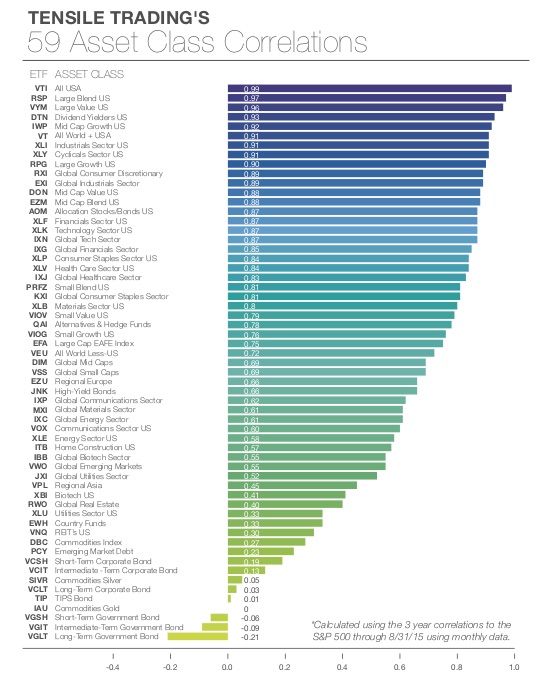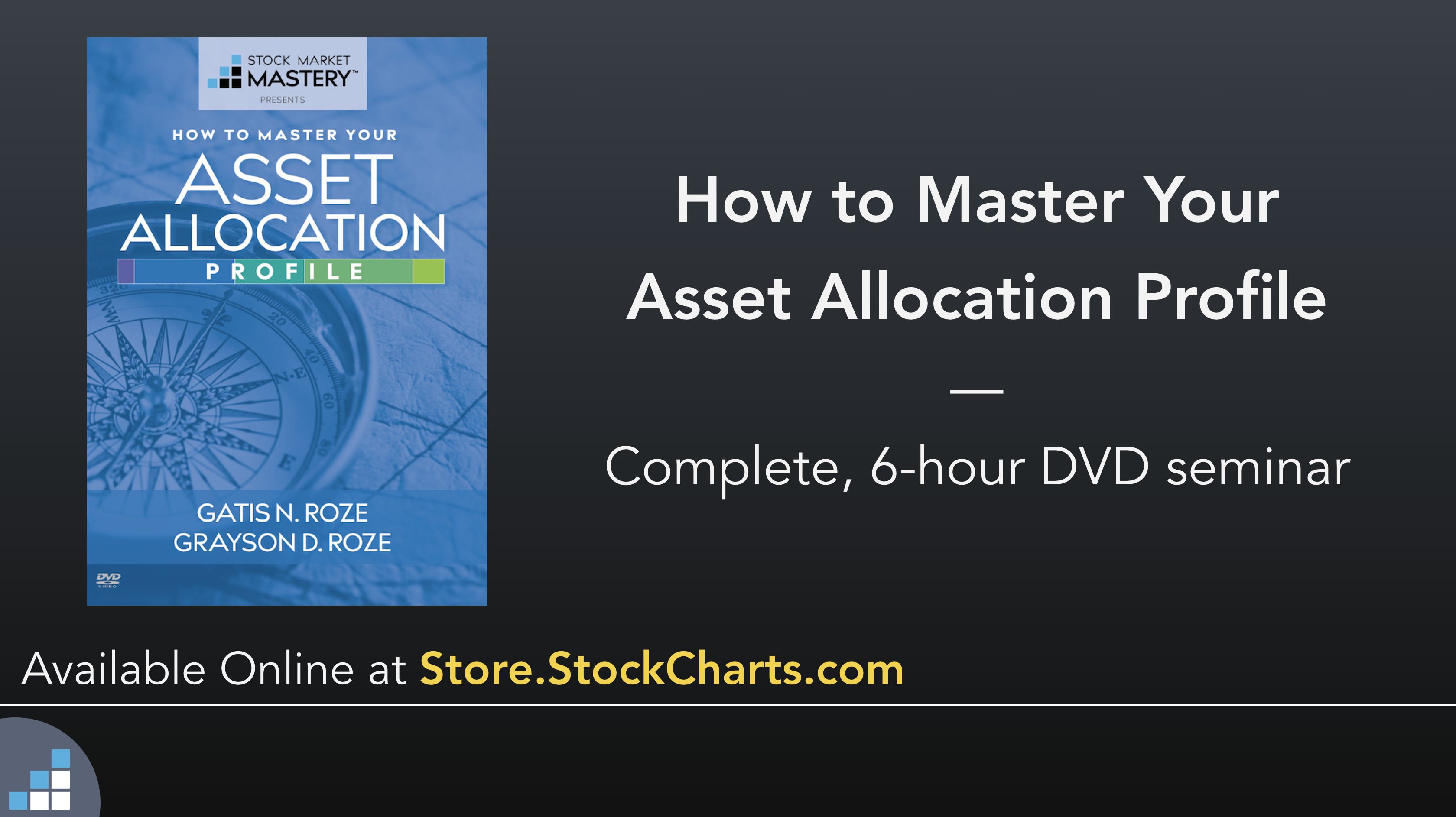 After two conferences in the past three weeks (ChartCon 2018 and TSAA - San Francisco), it is abundantly clear that individual investors want to challenge my portfolio strategy. Therein lies the risk of 100% candid exposure on my holdings and investing approach.
After two conferences in the past three weeks (ChartCon 2018 and TSAA - San Francisco), it is abundantly clear that individual investors want to challenge my portfolio strategy. Therein lies the risk of 100% candid exposure on my holdings and investing approach.
Rather than engaging in arm wrestling over whether my strategy is better than your strategy, I’ve decided to outline my portfolio very clearly and explicitly so that in the future, I can simply refer would-be debaters to this blog. In essence, I’m going to offer up the DNA of my portfolio and explain how it’s produced an outstanding bottom line for nearly 30 years.
STEP 1:
When Grayson and I wrote Tensile Trading: The Ten Essential Stages of Stock Market Mastery (Wiley 2016), we scrutinized, examined and weighed the hundreds of asset classes into which Morningstar has segmented the markets. We did likewise with many other websites — some of which had over a thousand different asset classes. So when I encourage you to review the 59 full-color asset classes in our book (page 23), I can assure you that “staggering” has been carefully winnowed down to “essential”. These same asset classes are loaded and pre-formatted in ChartList GR-10.07 in our ChartPack. The graphic shows you correlations for each asset class compared to the S&P 500.
 We exclusively incorporated only the best ETFs in each class versus mixing in non-tradeable indexes and mutual funds. The one challenge at that time happened to be that not all ETFs had five years of data (our preference for the correlations calculator). Therefore, they are based on the three years of data we had.
We exclusively incorporated only the best ETFs in each class versus mixing in non-tradeable indexes and mutual funds. The one challenge at that time happened to be that not all ETFs had five years of data (our preference for the correlations calculator). Therefore, they are based on the three years of data we had.
This then is your buffet of assets. Your job is to fill your plate with a diversified selection of assets from across the correlation spectrum. This is akin to marriage. Everyone will choose differently. Unlike the new robo advisors, I don’t believe one size fits all when it comes to an investor’s portfolio.
STEP 2:
With a carefully selected assortment of tasty assets on your plate, you can do some simple backtesting and determine how your portfolio would have done across the various market cycles. You might find it helpful to review a blog that I wrote about a basic portfolio of six asset classes. (Insert link to Action Practice Blog #25) The blog describes the six asset classes which were assembled with careful consideration of the correlations amongst each, and it explains three classic asset allocation models:
a) Equal Weight
b) Fixed Mix
c) Tactical Allocation
Just below the blog, don’t overlook the comments and calculations by one of our Investor Boot Camp graduates. Kumar back-tested these portfolios and showed that they achieve BOTH outperformance WITH less risk — that should be the Holy Grail for most rational investors. The point being is this: asset allocation is indeed worthy of your serious attention.
In my own portfolio, I carry 20 asset classes. For many investors, this might be too many. I’m a full-time investor so this is my passion and my livelihood. Others may be fine with as few as six asset classes. Below is the list of my 20 core asset classes. A personal caveat: I do not use the stock market for real estate or commodities exposure, and my portfolio list reflects this fact. These then are my asset classes:
- U.S. Large Growth
- U.S. Total Market
- U.S. Large Value
- U.S. Mid Caps
- U.S. Small Caps
- U.S. Allocations Stocks / Bonds
- U.S. Utilities
- Dividend Yielders
- Intermediate Bonds
- World (includes U.S.)
- International (without U.S.)
- International Small Caps
- Emerging Markets
- Europe
- Asia
- Health
- Biotech
- Telecommunications
- Precious Metals
- Unique Special Situations
STEP 3:
For all 20 asset classes, I maintain a PerfChart with the best ETFs and the best mutual funds in that asset class. I am constantly on the lookout for better funds that can potentially dethrone my best-of-breed nominees. This is very useful and easily achieved when presented with a new alternative — say, in the Mid-Cap realm. I would plot the new candidate on my PerfChart alongside my present players, and I can thereby determine if I truly have a winning candidate. This is an ongoing process for all 20 asset classes.
For a deeper description, please refer to my Best-of-Breed blog. An interesting conclusion is that ETFs triumph in 50% of the asset classes while mutual funds excel in the other 50% of classes. Once again, one size does not fit all in the investing arena.
The final personal caveat here is that the one asset class I do invest in via individual equities is U.S. Large Cap Growth stocks. I’ll cover this next.
STEP 4:
I spend a prime amount of my time on the previous 19 asset classes as I construct a CORE & EXPLORE portfolio amongst the group. For example, I consider the Healthcare asset class to be a CORE position, and I always keep a significant exposure there. On the other hand, my Biotech positions are more EXPLORE in nature and thereby flex in the dollars that flow into and out of this asset class.
Having said that, my ten equity positions (Large Cap Growth stocks) are ones that I would consider as SUPER-EXPLORE. While CORE positions are meant to protect my assets and produce some income, EXPLORE positions are meant to provide growth. The SUPER-EXPLORE category is meant to be traded with the objective of “plunging” on occasion and thereby making larger bets with larger risks — the objective being higher rewards. Fair warning: keep your sell disciplines well-exercised.
Looking back over the past few years, I would say my CORE positions have accounted for 60% - 80% of my portfolio, my EXPLORE positions were 10% - 20%, and my SUPER-EXPLORE positions were 10% - 15%. These percentages ebb and flow as I make strategic asset allocation adjustments.
For myself, a SUPER-EXPLORE portfolio never contains more than ten individual stocks and at times even less than ten. It’s generally traded based on my relative strength and momentum strategies. Here’s a sample SUPER-EXPLORE portfolio:
- Amazon (AMZN)
- Alphabet / Google (GOOGL)
- Visa (V)
- Mastercard (MA)
- Apple (AAPL)
- Salesforce (CRM)
- Adobe (ADBE)
- Microsoft (MSFT)
- Intuit (INTU)
- Intuitive Surgical (ISRG)
These SUPER-EXPLORE equities should be familiar names to all of you. Although they are more volatile than my CORE or my EXPLORE positions, I’d like to point out that over-trading these would have hurt your bottom line. Jesse Livermore once said, “After spending many years in Wall Street and after making and losing millions of dollars, I want to tell you this: it never was my thinking that made the big money for me. It was always my sitting. Got that? My sitting tight!”
I am happy to sit tight as an investor. Yes, it’s a cliche but true — the trend is indeed your friend. I do not have some genetic need to actively trade these stocks. Having said that, I am often tweaking asset allocations, as I have found this to be a highly profitable activity.
A question that often comes up is how do I decide the equities that populate my SUPER-EXPLORE portfolio. There are five tools I use repeatedly:
1. The Fantastic Four methodology which looks for equities (a) outperforming the market, (b) belonging to sectors outperforming the market, (c) stocks belonging to the best industries in these strong sectors, and (d) equities outperforming their sister stocks within their industry. Under chart styles, you’ll find my name. Use this pull-down menu to produce this chart.
 2. Grayson and I monitor very closely the new equities being accumulated by Fidelity each quarter, and we update and publish those in the Tensile Trading ChartPack. Fifteen days after each quarter, Fidelity publishes its holdings for all its Select Sector mutual funds (40 Funds). We keep tabs on what they are buying and selling. Over the years, this has provided some splendid profitable trades.
2. Grayson and I monitor very closely the new equities being accumulated by Fidelity each quarter, and we update and publish those in the Tensile Trading ChartPack. Fifteen days after each quarter, Fidelity publishes its holdings for all its Select Sector mutual funds (40 Funds). We keep tabs on what they are buying and selling. Over the years, this has provided some splendid profitable trades.
3. I use the Scan Engine and review all the Triple Top breakouts over $10.
4. StockCharts SCTR rankings.
5. Much like the Fidelity Select Sector Funds, I review the holdings of five top-rated Large Cap mutual funds. They are consistently Morningstar medalists and not surprisingly achieve outperformance over their peers by owning the top performing equities. For example, all of them presently own significant positions in Amazon, Microsoft and Visa. Most own Mastercard, Apple and Alphabet. Institutional sponsorship makes me look good, so I use it to my advantage. The five funds are:
- T. Rowe Price Blue Chip (TRBCX)
- Harbor Capital Appreciation (HACAX)
- Fidelity Growth (FDGRX)
- T. Rowe Price New America (PRWAX)
- Fidelity Blue Chip (FBGRX)
In other words, the institutional stock market gods have blessed these “Alpha” stocks and I have profited handsomely from those sponsorships. If and when I start to see them initiate selling campaigns, my volume and distribution analysis will trigger action long before they complete their liquidations.
STEP 5:
Market timing. At the ChartCon 2018 conference, Mary Ellen McGonagle presented some keen insights. Having worked for 15 years at the parent company of Investors Business Daily, she explained how William O’Neil closely monitored the behavior of the market’s leading equities for clues of deterioration or pending market turns. My own experience over the past 30 years confirms this. When combined with the 15 market timing indicators in our ChartPack (ChartList #10.4 Bullish & Bearish Dashboard), together they offer investors the confidence to make the right moves and remain on the right side of the market. By committing to appropriate asset allocation analysis, they will be rewarded by the market for this focus.
So there you have it! The DNA of my entire portfolio. You can agree or disagree, but it has worked very nicely for me over many decades. I encourage you to modify it as necessary to reflect your own interests, priorities and risk tolerances.

Trade well; trade with discipline!
- Gatis Roze, MBA, CMT
- Author, Tensile Trading: The 10 Essential Stages of Stock Market Mastery (Wiley, 2016)
- Presenter of the best-selling Tensile Trading DVD seminar
- Presenter of the How to Master Your Asset Allocation Profile DVD seminar
- Developer of the StockCharts.com Tensile Trading ChartPack






